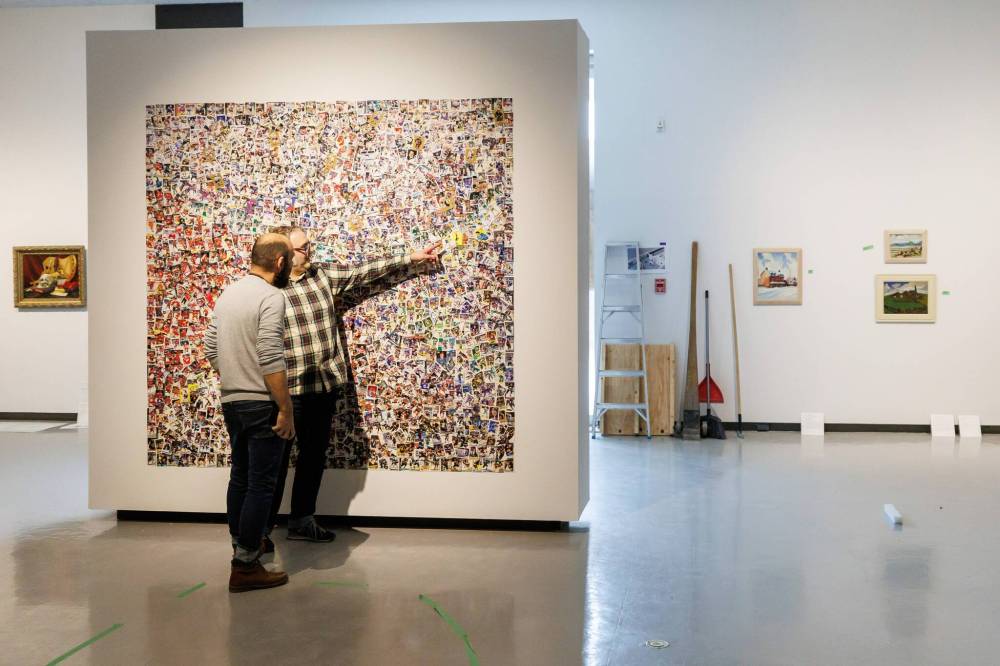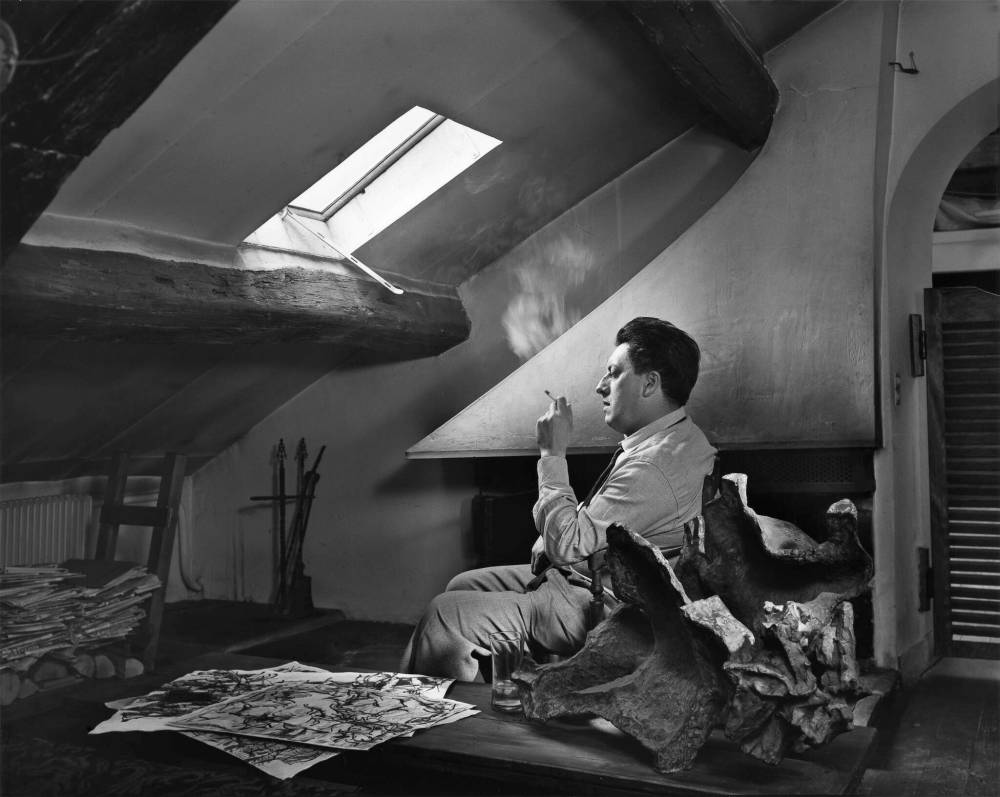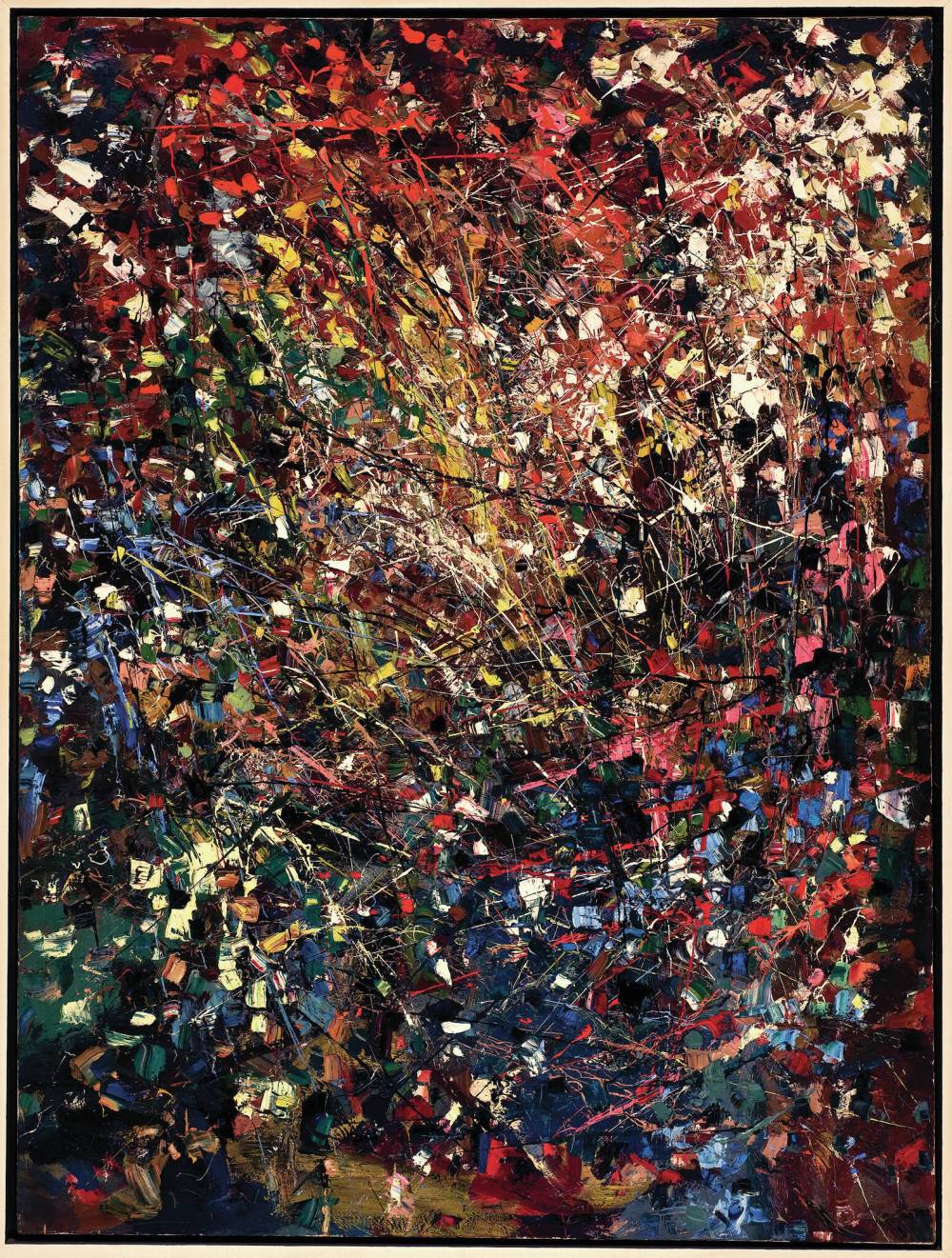Abstract legacy Jean Paul Riopelle exhibition a sprawling look at artist and those he influenced
Read this article for free:
or
Already have an account? Log in here »
To continue reading, please subscribe:
Monthly Digital Subscription
$0 for the first 4 weeks*
- Enjoy unlimited reading on winnipegfreepress.com
- Read the E-Edition, our digital replica newspaper
- Access News Break, our award-winning app
- Play interactive puzzles
*No charge for 4 weeks then price increases to the regular rate of $19.00 plus GST every four weeks. Offer available to new and qualified returning subscribers only. Cancel any time.
Monthly Digital Subscription
$4.75/week*
- Enjoy unlimited reading on winnipegfreepress.com
- Read the E-Edition, our digital replica newspaper
- Access News Break, our award-winning app
- Play interactive puzzles
*Billed as $19 plus GST every four weeks. Cancel any time.
To continue reading, please subscribe:
Add Free Press access to your Brandon Sun subscription for only an additional
$1 for the first 4 weeks*
*Your next subscription payment will increase by $1.00 and you will be charged $16.99 plus GST for four weeks. After four weeks, your payment will increase to $23.99 plus GST every four weeks.
Read unlimited articles for free today:
or
Already have an account? Log in here »
Hey there, time traveller!
This article was published 29/05/2024 (557 days ago), so information in it may no longer be current.
It’s no small feat to tackle the half-century oeuvre of one the most significant Canadian artists of the 20th century and say something new about it.
But that’s precisely the job Sylvie Lacerte was tasked with.
Lacerte is the curator of Riopelle: Crossroads in Time, a major retrospective on the career and legacy of the trailblazing Quebec-born artist Jean Paul Riopelle (1923–2002).
Riopelle: Crossroads in Time curator Sylvie Lacerte was chosen to put together the exhibition because she wasn’t a Riopelle specialist
The exhibition was first mounted by the National Gallery of Canada in Ottawa last year as part of the centennial celebrations of Riopelle’s birth, and now makes its way to WAG-Qaumajuq, where it will be on view from Friday to Sept. 8.
Works from his long and prolific career — much of which was spent in France — have been exhibited before, of course. A lot. Especially in the recent past.
“So, the challenge was to do something different,” Lacerte says.
Art preview
Riopelle: Crossroads in Time
Curated by Sylvie Lacerte
● WAG-Qaumajuq
● Opens Saturday, runs to Sept. 8
● Opening celebration Friday at 7 p.m.; free
Lacerte has just arrived in Winnipeg from Montreal, and we’re sitting outside the gallery in the WAG where the exhibition is still being installed and lit ahead of Friday’s opening celebration.
“What I wanted to show was that Riopelle was still relevant, and I also wanted to show the variety of his practice, the diversity of his practice, and also the legacy he left after his death.”
She pauses, realizing it’s better to look at art than talk about it.
“Let’s go in,” she says.
This is a Riopelle show, but Lacerte wanted to include works by other artists — Riopelle’s peers as well as the artists who came after — to highlight his legacy and the influence he continues to have on contemporary artists.
The most playful example greets you when you first enter the space.
On one side of a partition wall is Riopelle’s 1956 work, The Wheel II, an example of the palette-knife-painted mosaics he’s arguably best known for. It’s a dramatic work in deeply saturated blood reds, bottle greens and cobalts that has the effect of shattered glass.
On the flip side of the wall is another Riopelleian mosaic, this one an installation by Quebec City artist Marc-Antoine K. Phaneuf composed entirely of hockey cards and masking tape — a nod to both Riopelle’s 1950s style and love of the game. (Phaneuf, who is here for the installation, figures there are about 1,500 cards stuck up there. And since this is the Winnipeg version of this work, the Jets are well represented.)
Artist Marc-Antoine K. Phaneuf watches as the lighting on his piece, Canadian Painting (Riopelle), is fine-tuned.
“(Riopelle’s) still relevant even for today’s artists, and that’s an important point I wanted to make you know because some people are kind of detractors of Riopelle, especially after the Riopelle year (in 2023) — we heard so much about him,” Lacerte says.
Lacerte also wanted to do a true Riopelle retrospective — something that hadn’t been done at the National Gallery of Canada since 1963 — as opposed to a more thematic show, which is often how his work is exhibited.
She also wanted to include works that are rarely shown or have never been shown, drawing from about 30 Canadian and international private and public collections.
Curating an exhibition of this scale was more exciting than daunting, she says.
“It was a challenge to grapple with 50 years of practice, but what was interesting about that timespan was that he did so many different things within a period of 10 years, and so that was really exciting, to try and give a coherent storyline,” she says.
Jean Paul Riopelle in a 1965 photo by Yousuf Karsh.
“Riopelle was a storyteller, so I also wanted to tell a story, the story of Riopelle.”
Riopelle: Crossroads in Time is organized chronologically, from 1942 to 1992, which not only makes it easy to navigate, but underscores just how much his style evolved over his career to startling effect.
One of his first paintings, 1942’s wryly titled Very Still Life (Nature bien morte) — “that showed his humour already at a very early age,” Lacerte comments — depicts a skull flanked by paintbrushes, books, a horn and other tools of artistic pursuit, and is quite a far cry from the iconic mosaics he started creating in the 1950s when he dropped the paintbrush and picked up the palette knife.
(Also on view are pieces from his 1940s period as a member of the Automatistes, an influential group of young Québécois artists. He did the cover artwork for their 1948 anti-establishment manifesto, Refus global, of which he was a signatory.)
But if you think you know Riopelle based on the mosaics, you don’t — which was another point Lacerte wanted to make. He was a fearless experimenter. Oil, watercolour, ink, lithography, aerosol paint, pastels, felt marker — you name it, he worked in it, creating both abstract and more figurative works.
Jean Paul Riopelle’s Vallée, 1949-50, oil on canvas
If you look at a Riopelle from the 1950s and Riopelle from the 1980s, you wouldn’t necessarily think they were by the same artist.
And he wasn’t confined to the canvas. Sculpture, too, became a cornerstone of his career. The exhibition includes sculptural works by Riopelle as well as his contemporaries, such as Swiss sculptor Alberto Giacometti.
“I wanted to have a work by Giacometti, because not only were they good friends, but he really encouraged Riopelle to go towards sculpture,” Lacerte says. “And they work the same way. You can feel the hands moulding the clay or plaster. Riopelle really always worked in a very tactile way.”
Despite her encyclopedic knowledge of the man, Lacerte was not exactly a Riopellehead prior to embarking on this project. The art historian, author and independent researcher was specifically tapped by the National Art Gallery as a guest curator because she wasn’t a Riopelle specialist.
“They wanted to have a new eye on his production, a fresher eye on his production — but needless to say I did a lot of research because I wasn’t an expert. It was three years in the making, this show.”
In that time, Lacerte’s relationship to Riopelle’s work changed, too.
“I became a real fan,” she says with a chuckle. “Which I didn’t think I would, but it worked.”
I ask about the Riopelle detractors she mentioned earlier.
“Some people think he’s passé, you know, and I don’t believe it’s true. He renewed himself all the time.”
jen.zoratti@winnipegfreepress.com

Jen Zoratti is a columnist and feature writer working in the Arts & Life department, as well as the author of the weekly newsletter NEXT. A National Newspaper Award finalist for arts and entertainment writing, Jen is a graduate of the Creative Communications program at RRC Polytech and was a music writer before joining the Free Press in 2013. Read more about Jen.
Every piece of reporting Jen produces is reviewed by an editing team before it is posted online or published in print – part of the Free Press‘s tradition, since 1872, of producing reliable independent journalism. Read more about Free Press’s history and mandate, and learn how our newsroom operates.
Our newsroom depends on a growing audience of readers to power our journalism. If you are not a paid reader, please consider becoming a subscriber.
Our newsroom depends on its audience of readers to power our journalism. Thank you for your support.
History
Updated on Wednesday, May 29, 2024 10:16 PM CDT: Fixes box information
